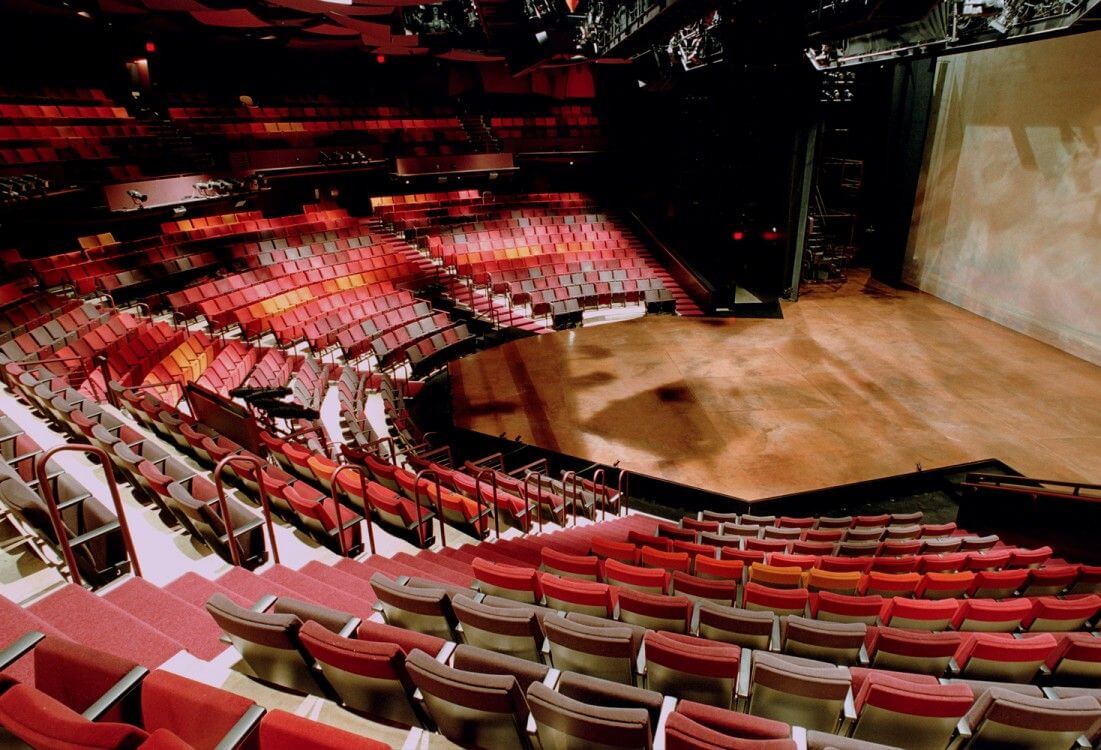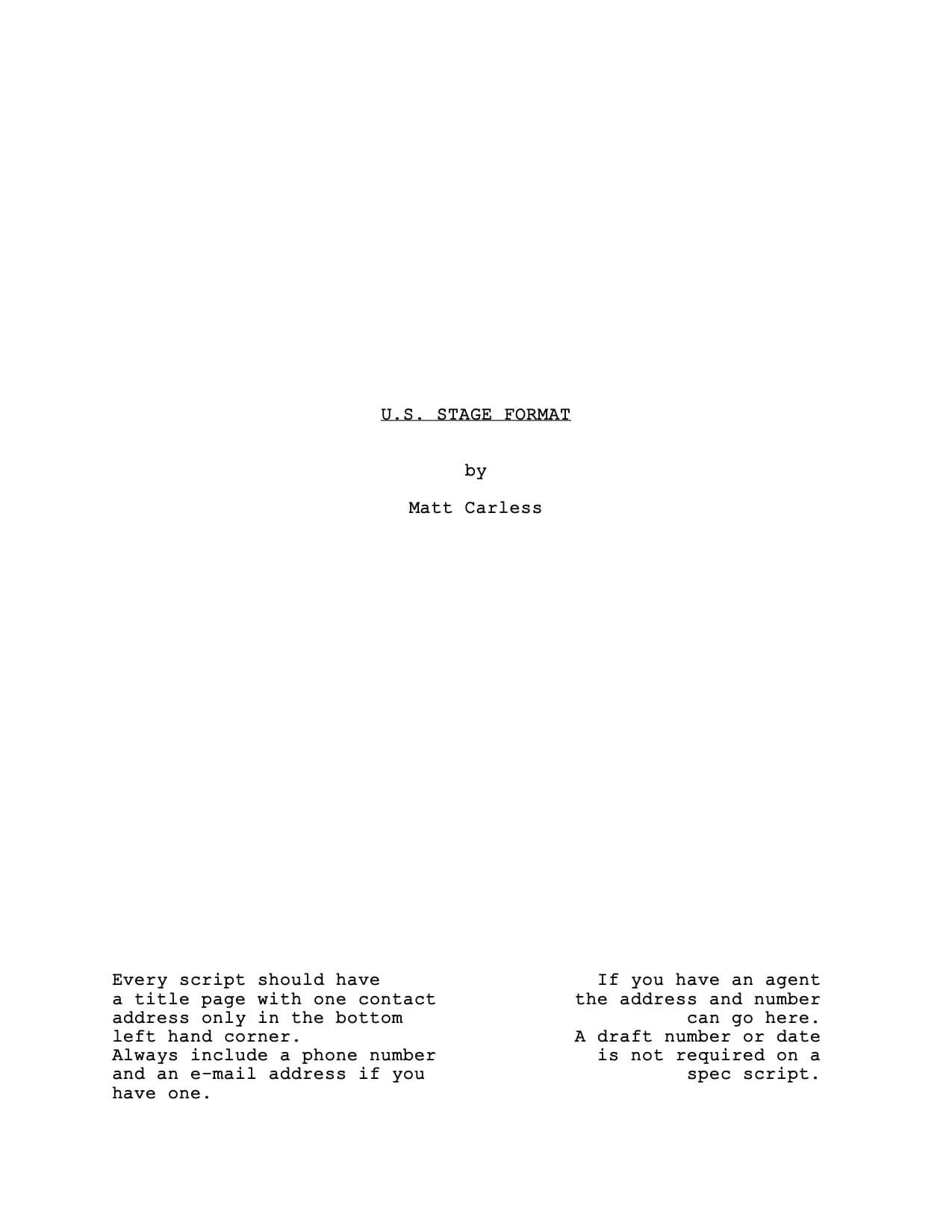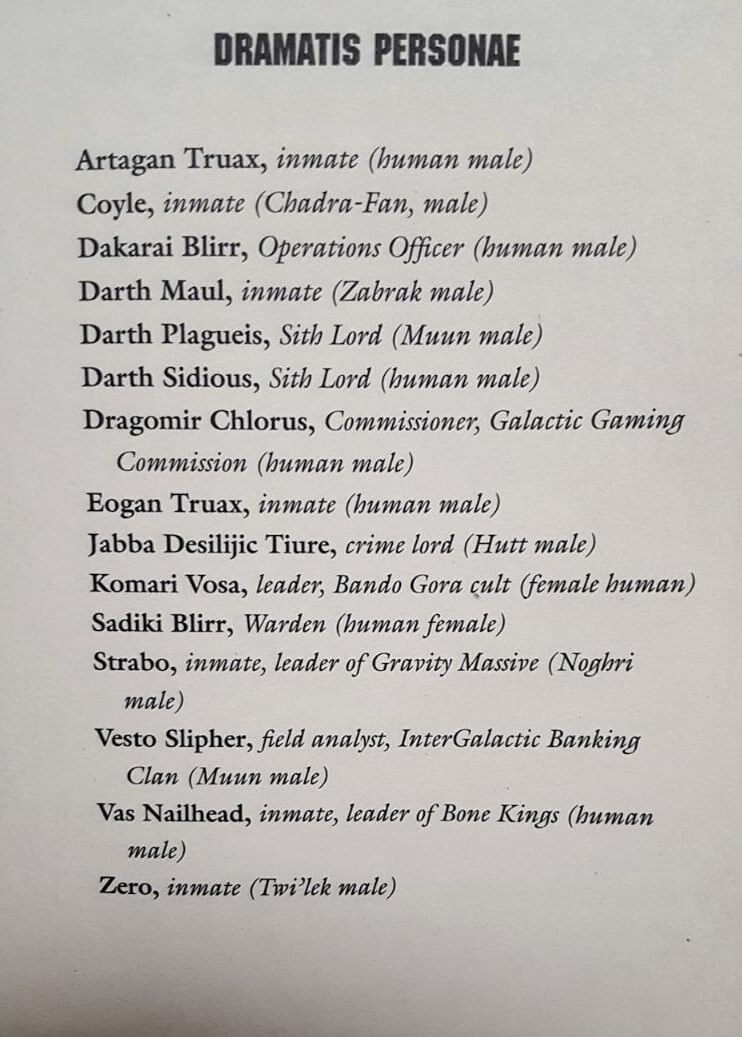So you’re ready to learn about a new script writing format! If you’re familiar with one or the other — stage plays or screenplays — then you’re halfway there to understanding the other. If not, don’t fret, it may just take a little more time to master the basics. We’re going to show you everything you need to know about play script format; with all the tools and templates you’ll need to get started. But first, let’s review the terms.
Format for Plays and Screenplays
Playwriting vs screenwriting
Good news first: stage plays and screenplays share a lot of similarities. Both are generally structured the same way, with title pages, slug lines, and dialogue. Bad news: there are a few intricacies that make plays and film scripts different.
Here’s writer Dui Jarrod breaking down some of the conceptual differences between stage plays and screenplays:
Play Script Format vs. Screenplay Format • Examined by Film Courage 2
“When I sit down to write a play, I’m thinking about what I want to say. When I sit down to write a movie, I’m thinking about what I want to show,” Jarrod said about the difference between the two mediums.
By considering the practical and conceptual differences between screenplays and stage plays, we’re better prepared to plan out our own stories. We’re going to dive into some technical differences between stage plays and screenplays, but first let’s jump into a stage play definition.
STAGE PLAY DEFINITION
What is a stage play?
A stage play is a story written that’s intended to be performed in a theater. Stage plays usually include a character glossary (dramatis personae), setting and time, and outlined act and scenes. Intermissions and act/scene-endings are almost always written into the script, as are stage directions, dialogue, and actions.
Famous Types of Stage Plays:
- Comedies
- Dramas
- Tragedies
- Histories
- Satires
- Musicals
- Farces
History of Play Script Formatting
Where did play script format begin?
Stage plays have been around for thousands of years — tracing all the way back to the ancient world. Egypt, Rome, and Greece all produced stage plays, and some of their works are considered among the greatest plays of all time.
Modern theater is very much rooted in the ancient structure of stage plays. When writing a stage play, you should consider what kind of a stage you envision your play performed on. There are more than a dozen types of stages, but we’re going to focus on the three most popular.
Proscenium Stage

Play Script Writing for the Proscenium Theater
The proscenium is the most popular type of theater stage. The stage faces out and is well known for its curtain, which separates the production from the audience. When a character breaks that veil, it’s referred to as “breaking the fourth wall.”
Example: Most drama productions
Thrust Stage

Play Script Writing for the Thrust Stage
The thrust stage brings the audience closer to the production. The stage itself and the surrounding audience chairs form a semicircle.
Example: Most improv comedy stages
Theater in the Round

Play Script Writing for the Theater in the Round
The “theater in the round” quite literally gives the audience a unique perspective every time they see the play. It also changes the dynamic of how you present scenes.
Example: WWE
If you plan on directing your stage play, you’ll have to write stage directions in your script. But remember: stage directions can always be added at a later date, just like camera directions in a screenplay.
Format for Plays Explained
Guide to play script formatting
Before you get into the actual “play,” there are a few things you’re going to need to cover in the script. The first is the title page — which is very similar to a screenplay title page.
If you’re using a program like Final Draft or StudioBinder’s screenwriting software, then simply use the template provided. If not, the image below should give you a good idea of how it should look.

Play Script Example • BBC Title Page Template
Title page check. Now it’s time to write the dramatis personae. Woo, sounds fancy (don’t worry, it’s really not). The dramatis personae is just a character glossary — and it should look something like this:

Play Script Example • Star Wars EU Dramatis Personae
In the dramatis personae, every character should be named, along with a very brief description of their age or physical attributes.
Next up is the setting and time; where are we? And when are we?
---------------------------------------------------------------------------------------------
SETTING
A quaint seaside bungalow off the Amalfi Coast.
TIME
A Wedding ceremony, the day into night, the present.
---------------------------------------------------------------------------------------------
The “setting and time” is probably the easiest section to outline — and it can be of varying lengths depending on how much you want to say.
The last thing you should do before starting the story is outline the structure of the play. Simply center your acts in the script, and place the corresponding scenes below. It should look like this:
---------------------------------------------------------------------------------------------
ACT I
Scene 1 The house Present
Scene 2 Bedroom Present
ACT II
Scene 1 Gazebo Present
Scene 2 Cellar Present
---------------------------------------------------------------------------------------------
It’s worth mentioning that the formatting guidelines for stage plays are far less important than they are for screenplays. You could pick up two versions of the same play and see a myriad of different formats. But if you plan on optioning your stage play manuscript, the more organized it is, the better.
Format for Plays
How to write in play format
If you plan on writing a stage play you should review how to format a screenplay. Most script writers have a strong understanding of the screenplay format and the stage play format.
Think about it: you may have an idea for a screenplay, but it may work better as a stage play (or vice-versa). Some stories are just more naturally suited for one medium rather than the other.
One great example of this is Samuel Beckett’s play Waiting for Godot – a story that simply wouldn’t work as a film.
This next video shows how Waiting for Godot transformed live-drama and helped to institute the theater of the absurd movement.
How to Format a Play • Waiting for Godot Examined by Ted-Ed
Waiting for Godot thrives on the back of its dialogue and the live reactions that it evokes. Compare Godot to a film like A Quiet Place and the point should be clear: some stories fundamentally don’t translate from the stage to the screen, or vice-versa.
However, some plays have become great films. Take the works of Tennessee Williams for example. His plays A Streetcar Named Desire and Cat on a Hot Tin Roof were both made into classic films.
Many of Alfred Hitchcock’s best movies, like Rope and Dial M for Murder, were based on original stage plays. Another one of his classics, Rear Window, would also make an interesting stage production.
The point is that there’s a considerable amount of overlap between playwriting format and screenwriting format — learning about one or the other will make you better in both formats.
Up Next
Teleplay vs. Screenplay vs. Script
Now that we’ve reviewed what makes a stage play different from a screenplay, perhaps you’re looking for more information on what makes a screenplay different from a teleplay or a script. In this next article, we breakdown teleplays, screenplays, and scripts, with examples from 30 Rock and The Big Bang Theory. By the end, you’ll be ready to start a script of any kind!
